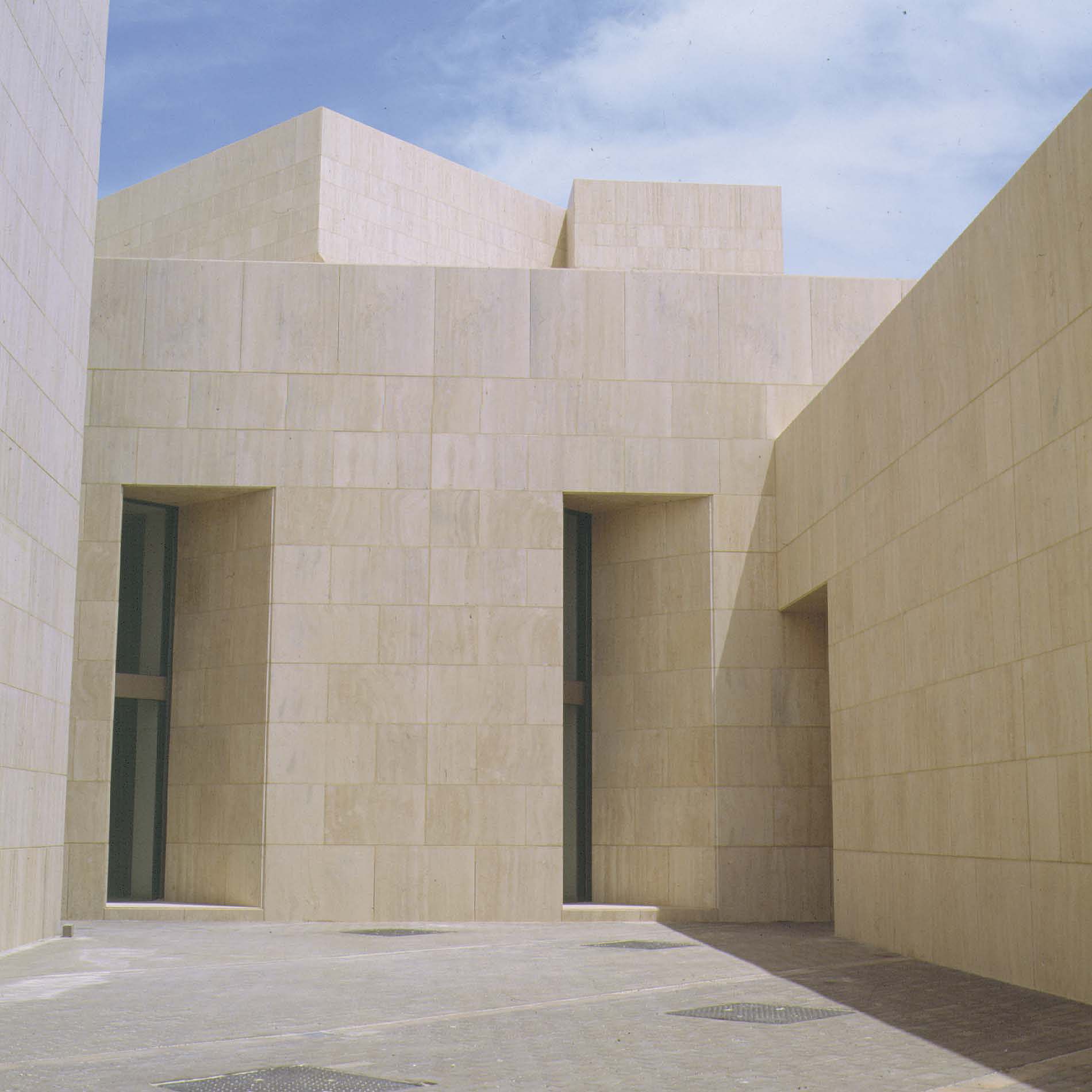The museum is the largest and one of the oldest museums in Bahrain, and with its central location, in the capital Manama, it is one of the most visited.

The museum is the largest and one of the oldest museums in Bahrain, and with its central location, in the capital Manama, it is one of the most visited. In the Bronze Age, Bahrain was an important trading hub in the Persian Gulf. It therefore has a very rich cultural heritage, covering almost 5000 years of the region's history, which is on display at the National Museum. To create space for the museum, a 123,000 m2 peninsula was built in the water. This gives the building a unique location where the body of the building is reflected in the surface of the water. The walls are clad in travertine, which refers to the colour of the sand dust in the surrounding nature, and contributes to the building's integration into its context. The artificial lagoon is only a few centimetres lower than the remaining outdoor areas, creating a sharp geometric figure, a water mirror contrasting with the landscape. The water also acts as a cooling and serene element. The climate is subtropical desert climate which has a searing light, which has had a great influence on the architectural choices in the project. Among other things, the intensity of light was used to indicate the main routes between the exhibition buildings and the museum spaces have a wide variety of light incidence.
The building
The architecture is in its starting point Nordic, but is strongly inspired by and respectful of traditional Islamic architecture. Like traditional Islamic architecture, it has a great and varied richness inside, while on the outside it is more simple and restrained. The exterior of the building has large unbroken surfaces that emphasise the simple geometry of the building, while the interior has a higher degree of complexity. Inside, the large foyer floor is covered with marble in a detailed pattern that reflects the plan and emphasises the shape of the foyer. In the smaller exhibition spaces, the flooring is wood, creating an intimate and present atmosphere.The spatial organisation supports the varied experiences in the nine separate exhibition spaces. The hard and durable travertine emphasizes the simple surfaces, while the light woven aluminum elements for sun shading, provide a nice level of detail where beautiful streaks of daylight appear. KHR Architects designed Bahrain National Museum back in the mid-80s. With its simple and unbroken surfaces, the museum still stands beautifully, and because of the durable materials and sharp aesthetic, the museum is still modern today.